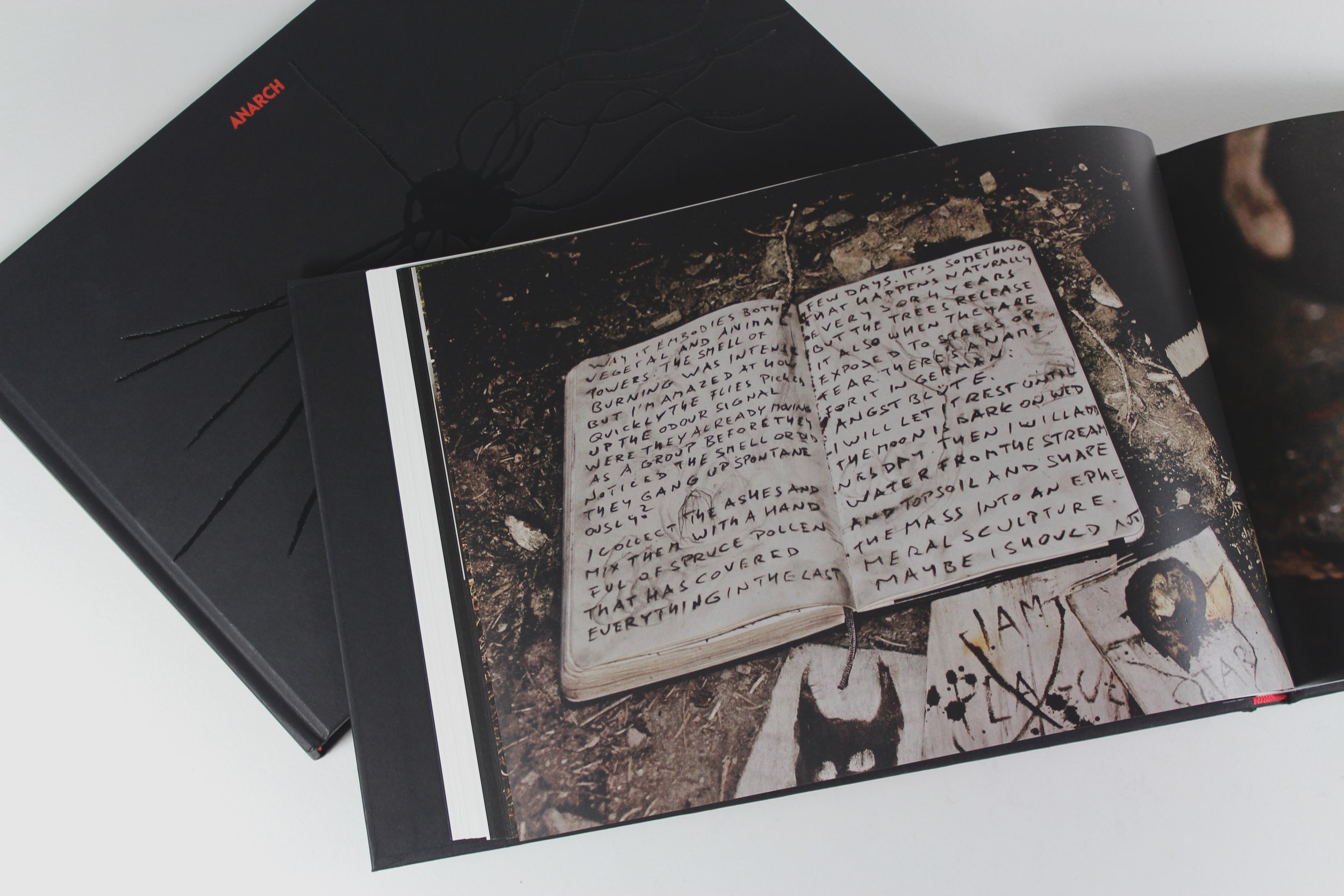Reviews of Gast Bouschet’s Anarch
Three extensive responses to Gast Bouschet’s challenging and powerful book Anarch are now online. Excerpts from the reviews by Frater Acher, Peter Mark Adams and Mark Nemglan can be read below, with links to the original articles.
On Paralibrum Frater Acher writes, ‘ANARCH can be read as a revolutionary manifest against the modern art world; a synthetic and yet brutal realm, suffocated by exploitative curation and capitalist investment strategies. Equally, ANARCH can be approached as an initiatory passage into the chthonic body of the underworld; a body that encounters eroticism, pain and delight just as much in decay and death as in germination and birth. Or ANARCH can be devoured as a satanic celebration of the black sun, the alchemical principle which does not offer light and warmth, but dissolution and decay, in order to break open objects – and this includes human bodyminds – for their flesh to be permeated by a lived understanding of the Other.’
Peter Mark Adams writes, ‘ANARCH documents a four year retreat undertaken in the Ardennes Forest to which end it employs a tripartite structure: ten confessional “letters” addressed to “friends and allies”; a short section of aphoristic utterances culled, as far as I can see, from the roughly worked pages of notebooks that also feature, all too briefly, in the third section of this project; some one hundred pages of colour photography that document the landscape and assemblages that resulted from this longstanding creative engagement with the land in the enactment of a sorcerous alchemy of inner transformation. These striking, impactful images (mere words cannot capture or substitute for their forceful presence nor do them justice) need to be experienced to be properly appreciated since they lay at the very heart of the entire project; and serve to draw the reader, ineluctably, into the sorcerer’s liminal realm.’
On the Nemglan Press blog Mark Nemglan writes, ‘Bouschet’s writings are a manifesto for a sorcerous art primordial in its obsessions but forward-looking rather than regressive; a dark and Promethean art that confronts the earth’s geopathy unflinchingly. It is an art that responds to a civilization limping into an epoch of permanent crisis and upheaval, and so it must work directly with the poisoned and crippled world upon which we all now stand.’



